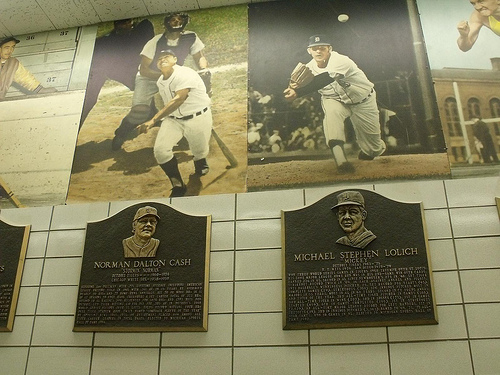By Sean Evans (The Cascade) – Email
Print Edition: May 23, 2012
The 1960s was a decade marked by change and tumultuous race relations in the United States. The Civil Rights Movement, the assassinations of John F. Kennedy and Martin Luther King Jr., the Vietnam War and the budding hippie movement were just a few markers of the massive societal changes taking place. In many instances, change was propelled through civil disobedience and protest – and in some cases, violence erupted.
In the early hours of Sunday, July 23, 1967, Detroit police officers broke up a group of more than 80 African Americans gathered to celebrate the return of two Vietnam veterans. Everyone present was arrested, and as they were taken away, a crowd gathered around the scene in protest. According to The Guardian, violence and looting broke out, and spread like wildfire throughout the city. By the end of the week, there were 43 dead, 467 injured, approximately 7200 arrests and over 2000 buildings destroyed, making it the deadliest riot in United States history.
While the riots were sparked by the arrests made in the early hours of July 23, 1967, the riot was the result of strained race relations in the city. It was black versus white, to put it simply. During the Second World War, and in the years following, African Americans had migrated to cities in the North in search of economic prosperity and freedom. Many were disappointed to find much of the same prejudices they had faced in the South. Local government and police were unashamedly racist, and according to a survey done by the Detroit Free Press following the riots, many blacks lived in fear of police brutality and cited it as the cause of the riot. With the massive influx of African Americans and the racist response of many whites in the city, Detroit was ripe for violent conflict. Groups of African Americans attacked whites, and vice versa.
When all was said and done, Detroit was still on edge. Many were simply waiting for the next outbreak of violence. Detroit was a city divided. It is here that we see the power of sport to bring people together.
The Detroit Tigers accomplished through baseball what many thought to be impossible. In 1968, the year following the riot, the Tigers won the World Series four games to three against the St. Louis Cardinals. That season, known as “The Year of the Pitcher,” saw Detroit pitcher Denny McLain win the Cy Young Award and American League MVP. The Tigers second starting pitcher, Mickey Lolich won three games in the World Series. The pitching that year was impressive, but the impact it had went far beyond the baseball diamond.
The success on the field had a palpable impact on the city and race relations. People were brought together by the team; a common bond that went beyond colour. Many of us can remember the feeling of togetherness and community that Vancouver experienced during the 2010 Olympics and the Cup run in 2011 (minus the ending). Sport has the power to bring people together – even in the midst of great conflict.
George Romney (father of Mitt), then Governor of Michigan, remarked on the impact the championship had on Detroit in a letter to the clubs owner, John Fetzer: “The deepest meaning of this victory extends beyond the sports pages, radio broadcasts, and the telecasts that have consumed our attention for several months. This championship occurred when all of us in Detroit and Michigan needed a great lift. At a time of unusual tensions, when many good men lost their perspective toward others, the Tigers set an example of what human relations should really be.”
Sports writer Joe Falls also summed up the impact that the victory had on the city of Detroit in his column in the Detroit Free Press:
“My town, as you know, had the worst riot in our nation’s history in the summer of 1967, and it left scars which may never fully heal … And so, as 1968 dawned and we all started thinking ahead to the hot summer nights in Detroit, the mood of our city was taut. It was apprehensive … But then something started happening in the middle of 1968. You could pull up to a light at the corner of Clairmount and 12th, which was the hub of last year’s riot, and the guy in the next car would have his radio turned up: … ‘McLain looks in for the sign, he’s set – here’s the pitch’ … It was a year when an entire community, an entire city, was caught up in a wild, wonderful frenzy.”
The city was brought back together, for a moment, by the love of a game.


